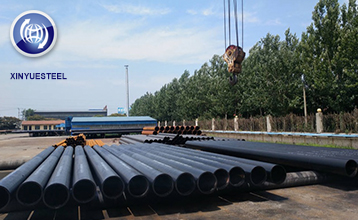Coal prices are still supported and will not fall sharply
Oct. 15, 2020
Affected by the following factors, port coal prices may stop rising, or even drop slightly, 1. Power plants are high in inventory, and some power plants are overhauled. At present, whether it is a key power plant or a centralized power plant, the number of days for coal storage and availability is at a high level of more than 28 days. 2. The phased transportation has come to an end, hydropower and UHV transmission continue to generate power, and power plants consume low coal. At present, the power plant's daily consumption is significantly lower than the same period last year. 3. Measures to ensure supply have taken effect, the release of resources in Inner Mongolia has accelerated, and coal prices in production areas have fallen.

However, the author analyzes that due to the following factors, port coal prices will not drop significantly this month. In the case that the supply side and intermediate links have not been effectively improved, the market support factors are still strong. At best, coal prices in ports have fallen slightly, or remain at mid-to-high volatility.
1. Coal prices are still upside down.
In the first ten days of the year, futures prices rose sharply, spot quotations were firm, and low-sulfur coal quotations were on the high side. At present, the origin is shipped to the port and continues to be in an upside-down state. Once the port coal price stops rising or falling, the enthusiasm of shipping companies to operate water coal will drop significantly. After the market coal transportation volume decreases, the quantity of high-quality coal stockpiled in the port cannot meet the demand, and the port coal price will stop falling and stabilize.
2. The Daqin line was overhauled, affecting the entry of resources into the port.
October 7-31 is the time for intensive repairs on the Daqin line in autumn. The average daily shipping volume on the Daqin line has decreased, and the number of coal cars arriving at the port has also decreased. There is no coal car for half a day in the morning, resulting in continued low coal storage in Qingang. With the low coal deposits in Qingang, some traders will still actively support prices; even if coal prices fall, the decline will not be significant.
3. Economic activity increases, and demand for cement and coal for chemical industries rebounds.
Autumn is the peak of industrial production. The “Golden Nine and Silver Ten” triggered a resonance between infrastructure and real estate, and the demand for coal in cement, chemical and other industries increased; superimposed on winter storage and transportation, coal demand support is strong. The southern coastal areas are making every effort to sprint the annual economic development goals, focusing on investment projects, grabbing the golden period of construction in the fourth quarter, and intensively promoting key investment projects. In September, the electricity consumption of the whole society in Zhejiang and Jiangsu maintained a growth trend, and it is expected that the fourth quarter will also maintain a growth trend.
4. The safety inspection continues.
From the perspective of supply, the main producing areas are affected by factors such as strict control of coal management bills and safety and environmental inspections. There are many coal mines that stop production, and the production capacity of coal mines in production is also affected to a certain extent. In Inner Mongolia, production is basically based on the approved production capacity, and coal prices in the Ordos region have begun to decrease. However, due to coal management bills, the suspension of production and maintenance of some coal mines, and the high demand for downstream procurement, coal prices in Yulin are still rising. Affected by safety inspections in Shanxi, coal prices in the region are still willing to rise.
5. Restrict Australian coal.
Bayuquan, Jingtang Port, Fangcheng Port and other ports have notified steel mills to refuse Australian coal unloading and customs clearance from October 1. At present, there are more than 20 ships in Jingtang Port, and more than 3 million tons of coal are waiting for customs clearance. Many provinces have also received relevant notices: in Anhui Province, local steel mills and cement plants were told by the local energy bureau to prohibit the use of Australian coal; in Guangdong Province, local traders also received similar information from customs; in Fujian Province, Local state-owned institutions were told to stop buying Australian coal.
6. Imported coal level control requirements.
Under the equal control policy, the import quota in the fourth quarter will be reduced accordingly. If the total import volume in 2017 is 270 million tons, the remaining import quota will only be 50 million tons from September to December. Even if we implement equal control at 300 million tons in 2019, the average monthly import is about 20 million tons, which is roughly the same as the total import volume of 20.663 million tons in August. It is necessary for my country's northern ports to transport more than 5 million tons of coal each month. To a large extent, it has supported the coastal coal market to remain active, and port coal prices are still supported.



